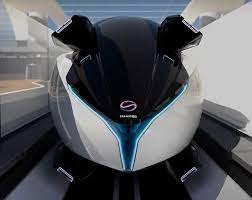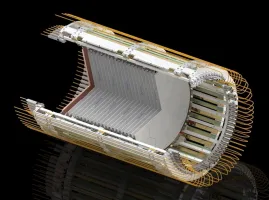Blog Credit: Trupti Thakur
Image Courtesy: Google
FluxJet – Canada’s 621 Magnetically Levitating Train Concept
The realm of futuristic high-speed transport took a leap forward this week as Canada announced development plans for a magnetically-levitating train capable of exceeding airliner speeds to connect Edmonton and Calgary.
Billed as a hybrid between an aircraft and train, the electric FluxJet concept from Canadian startup TransPod aims to shuttle passengers at over 1,000 km/h while hovering along a specially designed track.
Revolutionary Propulsion Technology
The FluxJet derives its astonishing velocity from a combination of magnetic levitation and electromagnetic propulsion.
Rather than rolling along steel wheels like a conventional train, the aerodynamic pod will float a short distance above the guideway using the same magnetic repulsion force that allows high-speed Maglev trains to trace their tracks without friction.
Linear electric motors distributed along the route will then accelerate the vehicles using magnetic fields, avoiding the need for massive onboard engines and fuel. Sophisticated computer control maintains precise gaps between passing pods.
By virtually eliminating friction while offering traction over the entire route length, this revolutionary concept can reach aviation-like speeds using a fraction of the energy.
Environmental and Economic Benefits
Beyond just achieving new milestones of raw speed, the FluxJet system aims to deliver major passenger and environmental gains within the Edmonton-Calgary corridor.
TransPod claims its 300 km/h top speed will slash travel times to under 30 minutes – competitive with air travel when accounting for airport connections and wait times. Further, the company estimates a 44% discount for FluxJet trips compared to equivalent airfares.
And without jet fuel emissions, the electric transit network expects to eliminate 636,000 tonnes of CO2 per year. The efficiency edge of magnetic levitation means the system can operate on renewable energy sources as they expand.
Technical Hurdles Ahead
As pioneering as it sounds, the FluxJet still faces steep challenges before becoming operational. No in-service magnetically levitated transport line has exceeded 600 km/h in real world use. And safety certifications for protocols like emergency braking remain unwritten.
The hefty pricetag for constructing 300+ km of precision guideway through remote terrain also poses financial barriers. Attracting private funding will likely require government partnerships to socialize initial outlays.
Nonetheless, with recent feasibility studies completed and technology demonstrations ongoing, the audacious Canadian magnetic levitation train is positioning itself to materially advance the state of the art for mass transportation. It reflects a growing global appetite to fund cutting-edge mobility projects offering transformational change.
Blog By: Trupti Thakur

03
FebRecent Blog
India’s Steps Into 6GMay 15, 2025
The New Accessibility Feature of AppleMay 14, 2025
The Digital Threat Report 2024May 13, 2025
The MADMAX ExperimentMay 12, 2025
The EntraID Data ProtectionMay 10, 2025




